There are many different parts of plants that work together to help them grow and survive. Roots are like plants’ feet, anchoring them in the ground and drinking up water and nutrients from the Soil. Stems are like the plants’ backbone, holding them up and carrying water and food to different parts. Leaves are like the plant’s kitchen, using sunlight to make food through a process called Photosynthesis. Flowers are like the plant’s way of making babies, producing seeds for new plants. Fruits protect seeds and help them spread. Seeds are like tiny packages containing everything needed for a new plant. Buds are like small, undeveloped versions of stems and flowers, ready to grow when conditions are right. Here we have discussed more about stems.
Plants Stems
Stems are like the backbone of plants. They’re the part that supports leaves, flowers, and Fruits, and they also transport water and nutrients throughout the plant. Picture a tree truck or a flower’s stalk – those are stems. They are usually found above ground, but some plants have underground stems too, like potatoes. Stems come in different shapes and sizes, from thin and flexible to thick and sturdy. They can grow straight up, curve, or even crawl along the ground.
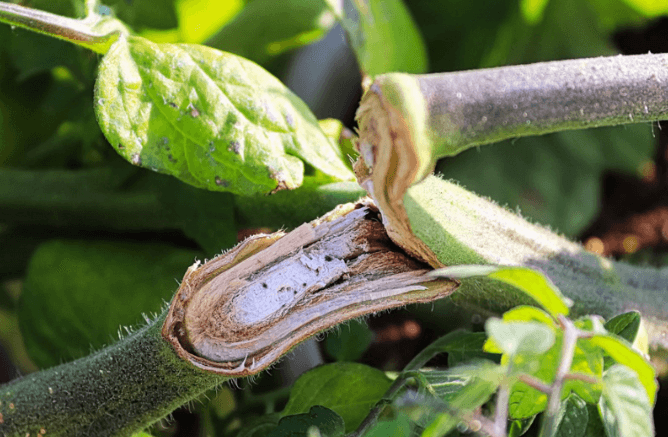
Stems are crucial for a plant’s survival because they provide structural support and help distribute essential resources. Without stems, plants wouldn’t be able to stand tall or reach for sunlight, and they wouldn’t be able to get the water and nutrients they need to grow and thrive. So, in simple terms, stems are the plant’s support system and highway for nutrients.
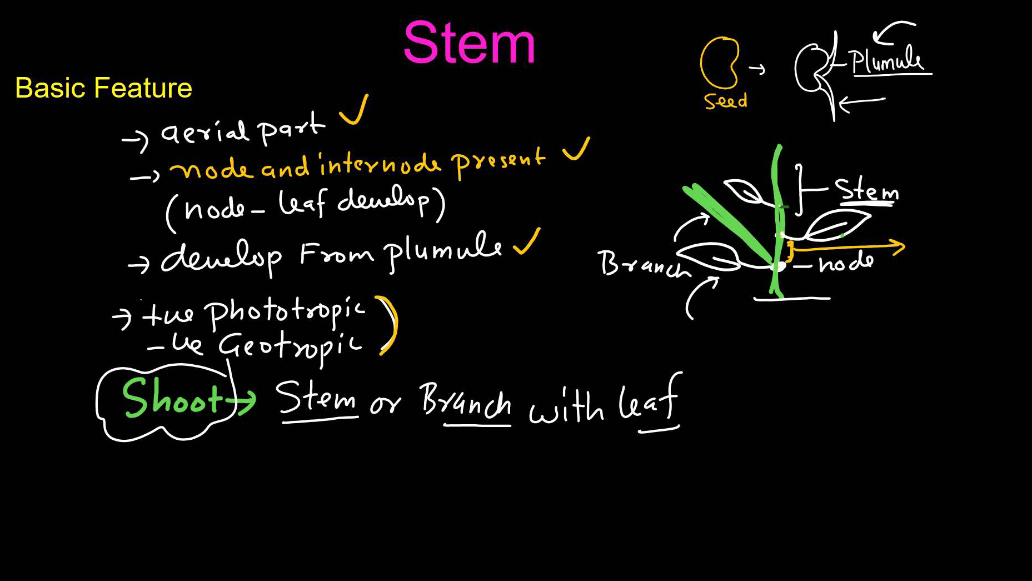
Structure of Plant Stem
A plant’s stem is like its backbone, giving support and holding everything up. It’s made of layers, like an onion, with each layer having a special job. The outer layer called the epidermis, protects the stem from harm. Inside, there’s a layer called the cortex that stores food for the plant. Then, there’s another layer called the vascular bundle, which acts like the plant’s blood vessels, carrying water and nutrients up and down the stem. In the very center, there’s the pith, which helps support the stem. Together, all these layers work to keep the plant strong and healthy, helping it grow tall and reach for the sun.
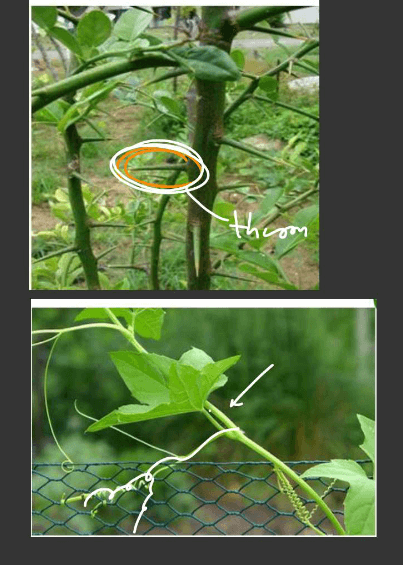
Modifications of Stems
Modification of plant stems refers to structural changes in the stem that adapt the plant to various functions beyond simple support. These modifications allow plants to adapt to various environmental conditions and ecological niches, enhancing their survival and reproductive success. These modifications can include:
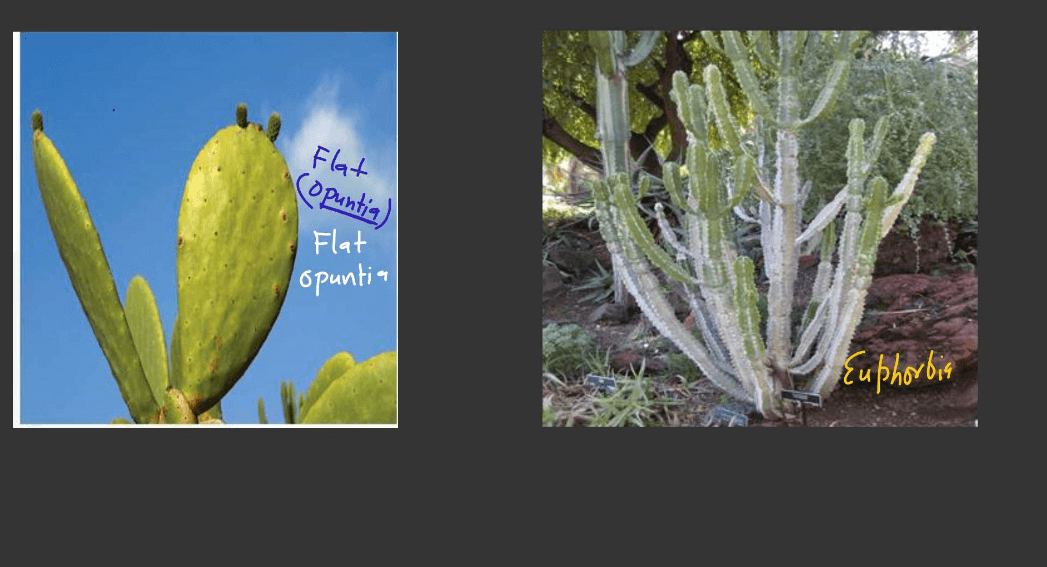
- Storage: Some stems, like those of potatoes or onions, are modified for storing nutrients. They often become swollen and store starch or water, serving as food reserves for the plant.
- Support: Stems of climbing plants such as vines or tendrils, are modified to aid in climbing structures or other plants. These modifications include tendrils that coil around objects or thorns that provide support.
- Photosynthesis: In some plants, stems are modified to carry out photosynthesis. Examples include cacti, where the stems are flattened and green to maximize surface area for photosynthesis.
- Protection: Stems can be modified into defensive structures, like thorns on roses or spines on cacti, which deter herbivores from consuming the plant.
- Aerial Roots: Some plants develop specialized roots from their stems, such as in certain orchids or ivy, which aid in attachment to surfaces or absorb moisture and nutrients from the air.
- Reproduction: Certain plants, like strawberries or spider plants, have stems that produce modified structures called runners or stolons. These structures enable asexual reproduction by producing new plants at their nodes.
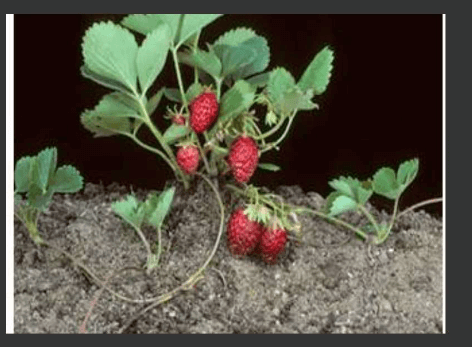
Types of Stems
There are mainly three different types of stems: Aerial stems, subaerial stems, and underground stems based on their modification.
| Different Types of Stems | |
| Types | Description |
| Aerial Stems | Aerial stems are parts of plants that grow above the ground, supporting leaves, flowers, and fruits. They include stems of trees, bushes, and vines, essential for structural support and nutrient transport. |
| Subaerial Stems | Subaerial stems are parts of plants that grow above the water or soil surface, like stems of trees and shrubs. They’re the visible parts that support leaves, flowers, and fruits. |
| Underground Stem | Underground stems are plant parts that grow beneath the soil surface, such as rhizomes, tubers, and bulbs. They store nutrients and help plants propagate and survive adverse conditions. |
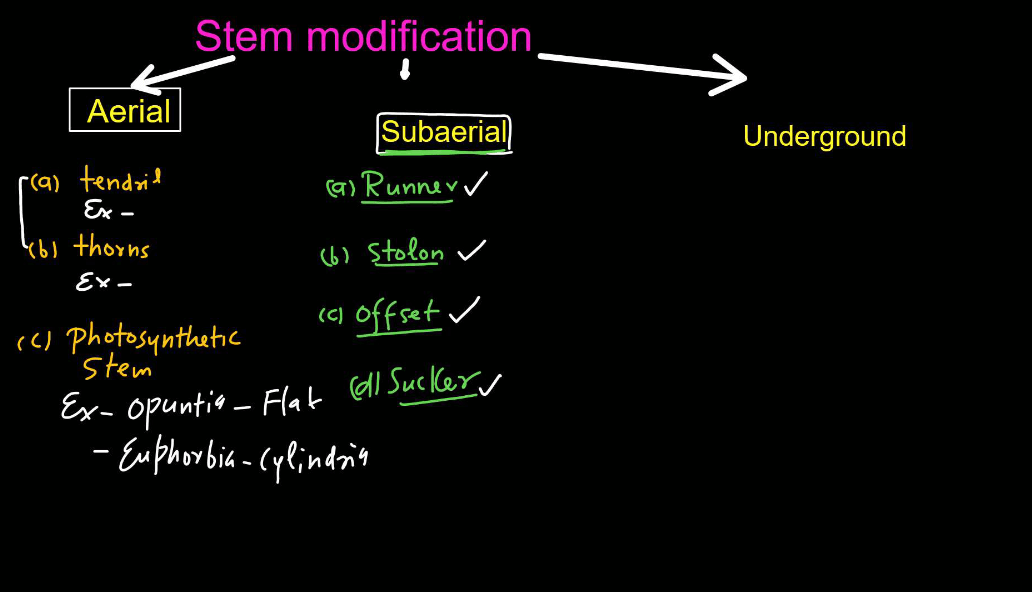
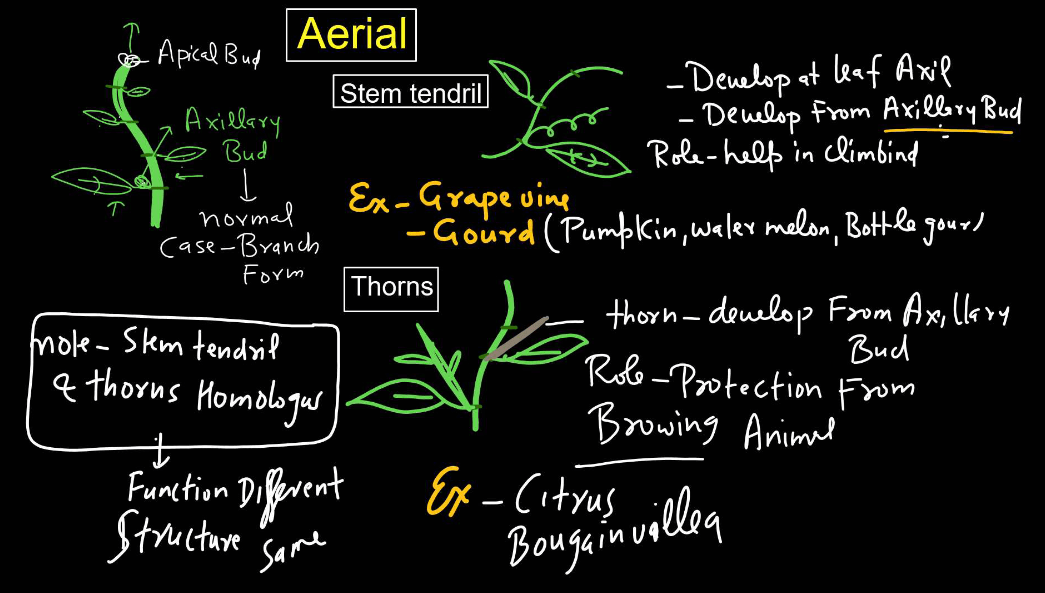
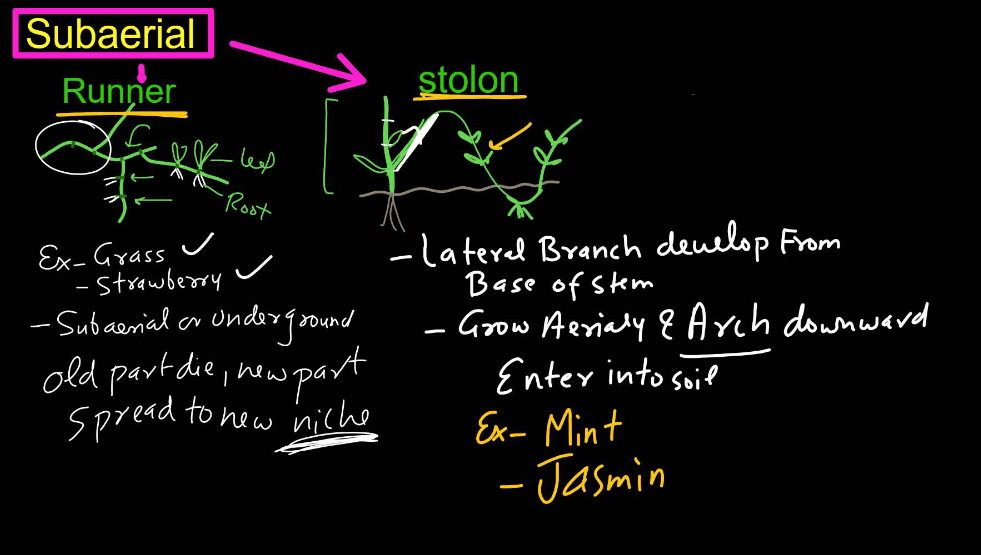
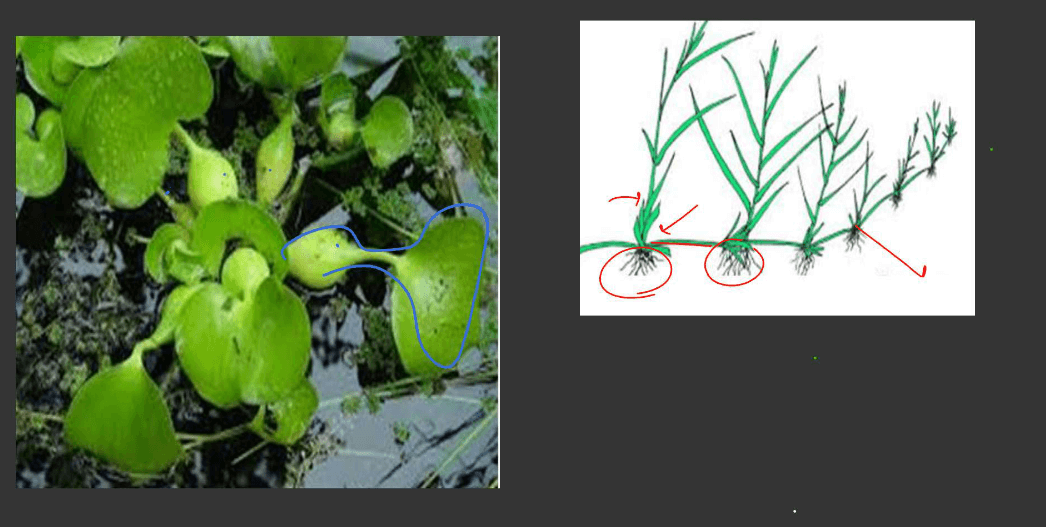
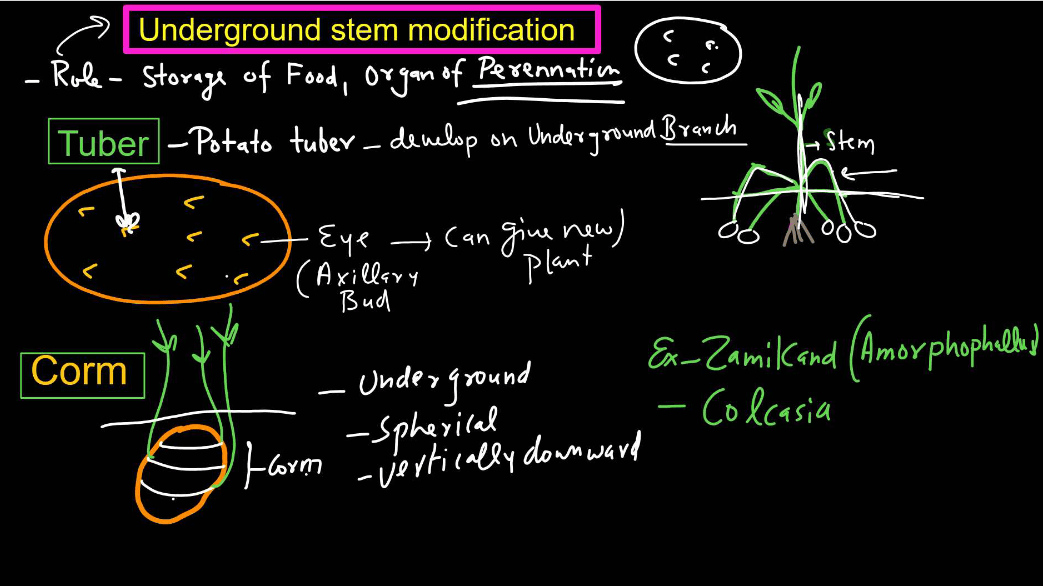
Functions of Plant’s Stem
Plant stems perform several essential functions, including:
- Support: Stems provide structural support for the plant, holding it upright and enabling it to reach for sunlight.
- Transport: Stems contain vascular tissues (xylem and phloem) that transport water, nutrients, and sugars between the roots and leaves. The xylem carries water and minerals from the Roots to the leaves, while the phloem transports sugars produced in the leaves to other parts of the plant.
- Storage: Some stems, such as those in tubers, rhizomes, and bulbs, serve as storage organs for water, nutrients, and carbohydrates.
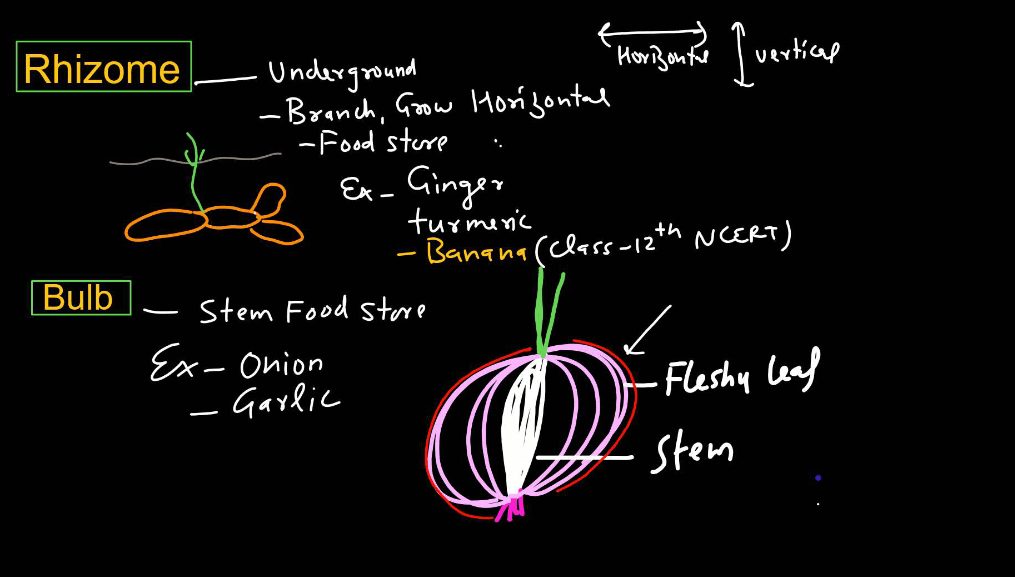
- Photosynthesis: Green stems, particularly in succulent plants like cacti, can perform photosynthesis, producing sugars for energy.
- Perception and Response: Stems can sense environmental cues, such as light direction, and respond by growing towards or away from the source of stimuli. This phenomenon, known as phototropism, allows plants to optimize their exposure to sunlight for photosynthesis.
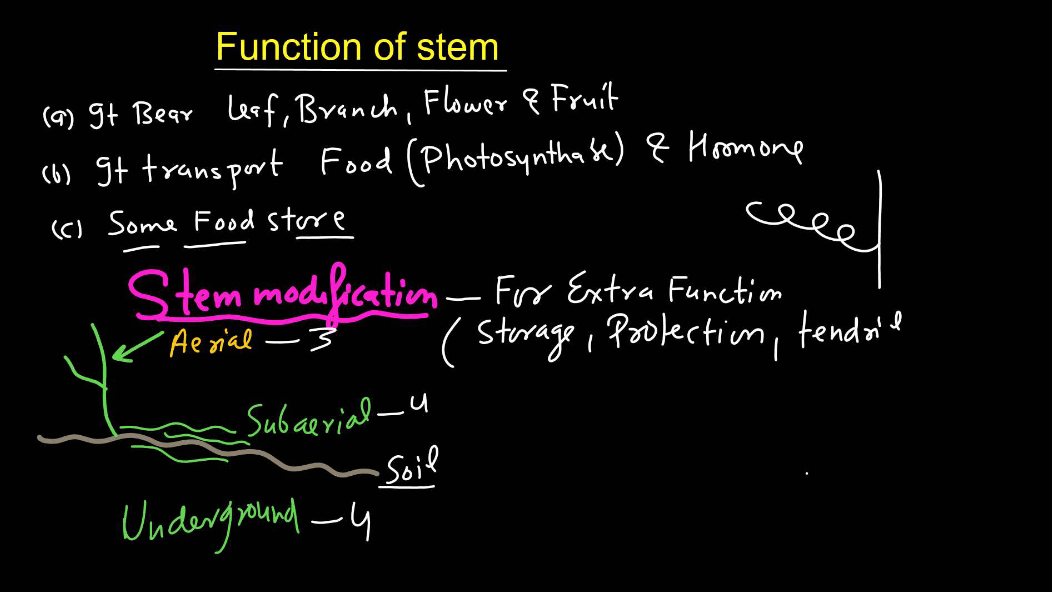

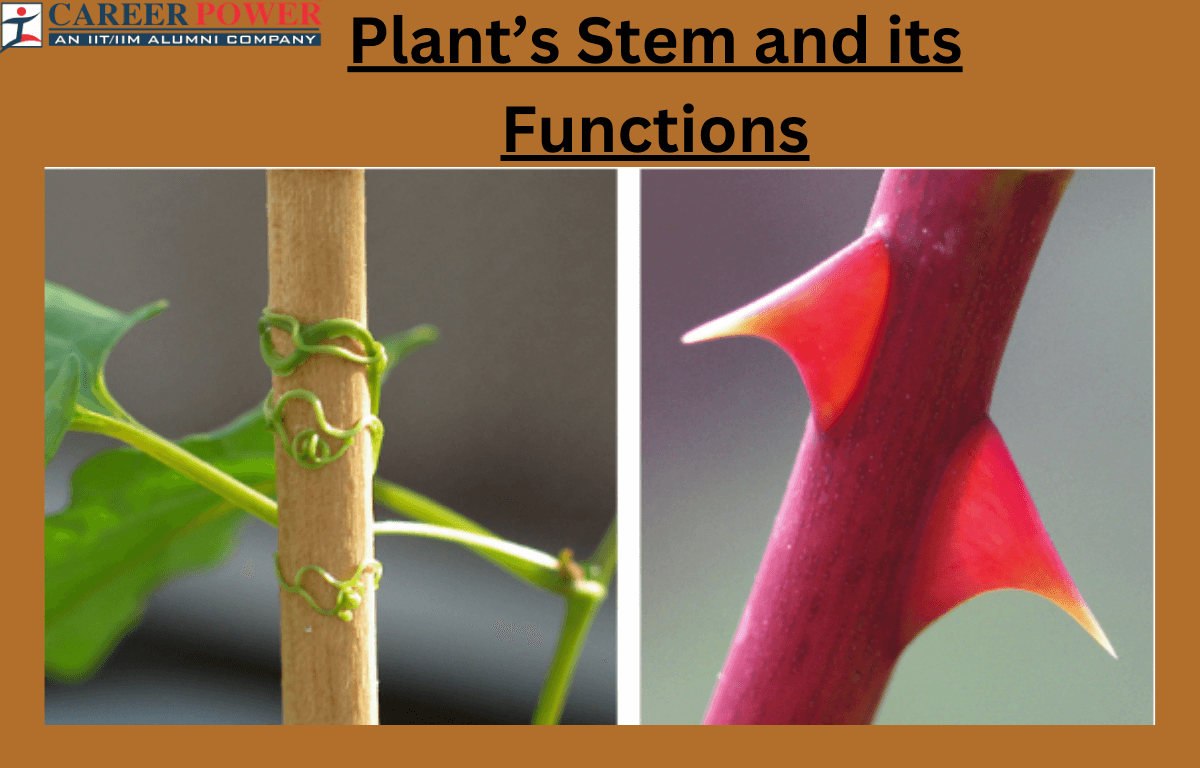

 50 Vegetables Name for Kids in English a...
50 Vegetables Name for Kids in English a...
 Food Chain: Definition, Types, Examples,...
Food Chain: Definition, Types, Examples,...
 Human Respiratory System: Definition, Di...
Human Respiratory System: Definition, Di...













